Basted Eggs
There are many different ways to make eggs, but Basted Eggs is our family favorite cooking method. The egg yolks are wonderfully runny and rich, while the egg whites get crispy and golden on the edges. The basting process also infuses the eggs with extra flavor!
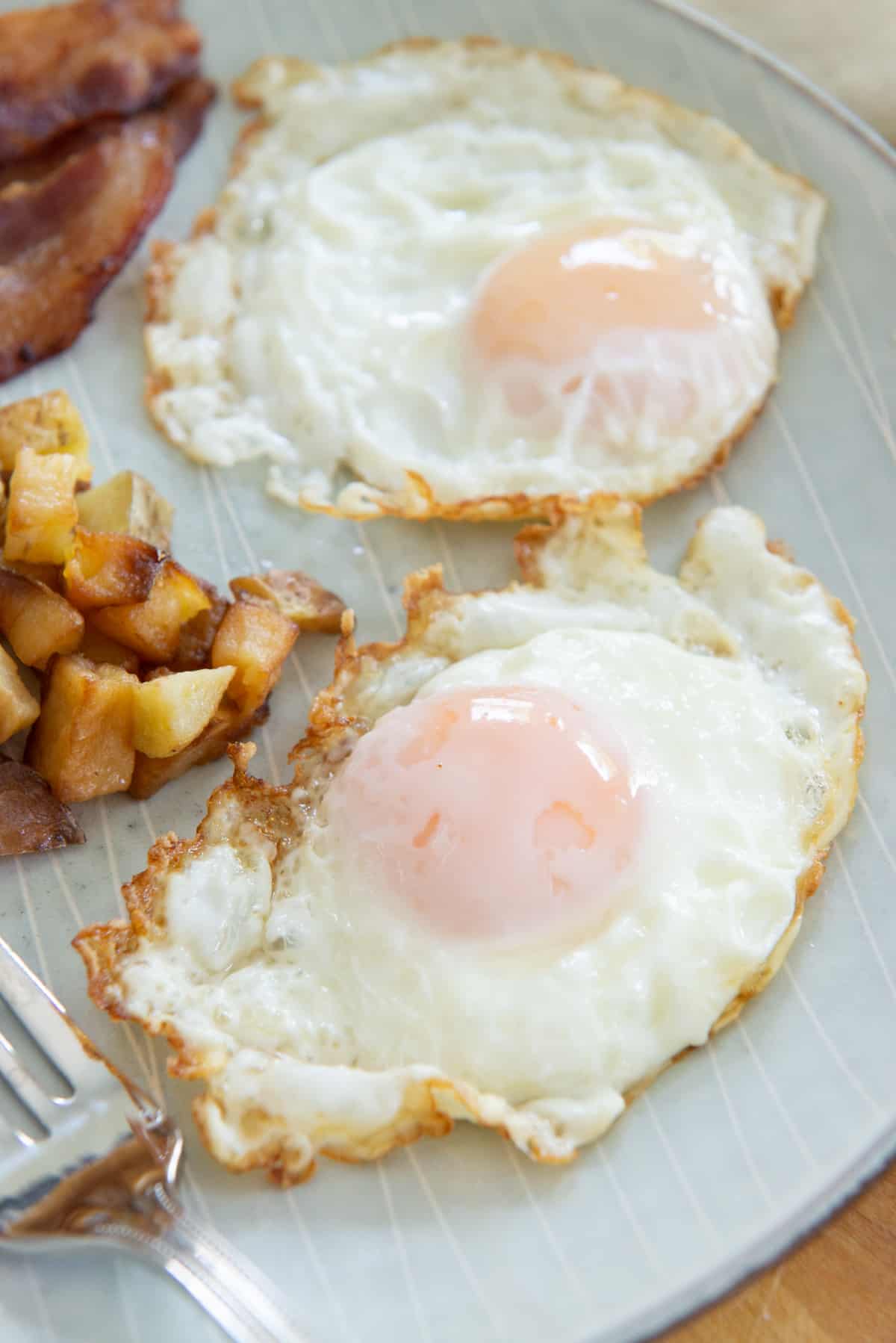
I have been making eggs this way for years and had no idea it was a “thing” until recently.
In my family, we affectionately called these “bacon fat splashed eggs,” as we would often cook up a large skillet of bacon strips, and crack eggs into the hot leftover bacon grease in the pan, using a spatula to swish the hot fat over the eggs.
The proper name for this method is actually “basted eggs,” and while I often use bacon fat, you can really use any fat you like to make these perfect eggs.
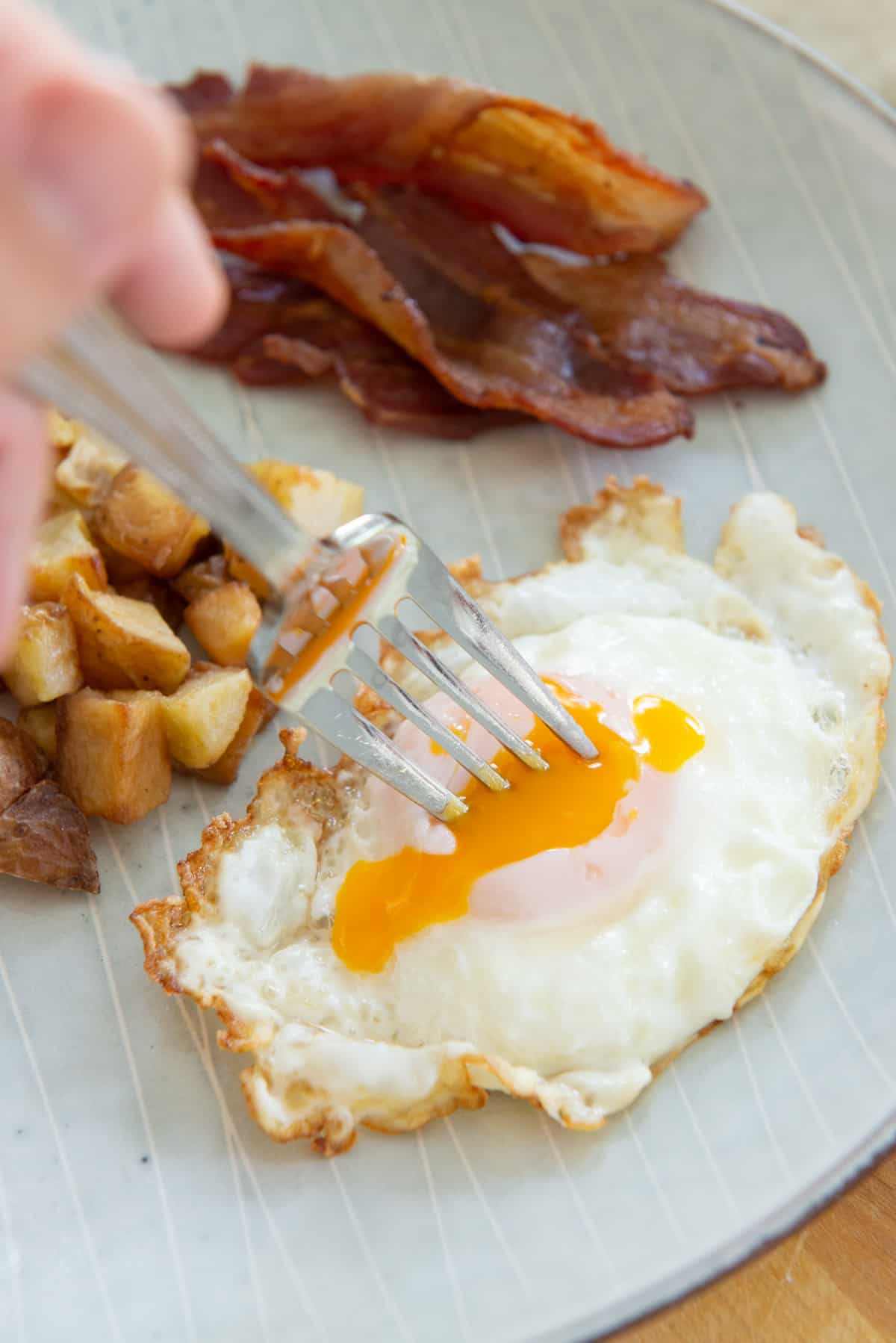
If you’ve never tried this type before, it’s similar to a fried egg or a sunny-side-up egg, except the top of the egg is set with hot oil.
Though I love all kinds of eggs, including Poached Eggs and Easy Peel Hard Boiled Eggs, a poached egg doesn’t have the crisp edges that I love.
Once you try it, this is the kind of simple recipe that easily becomes a staple in your cooking routine.
Tips for Best Results
Use fresh eggs – Newer eggs hold together better than old eggs. Check the dates on the box at the grocery store and make sure it’s at least a few weeks out.
Spend the money on good eggs – This egg recipe works for all colors, sizes, and types of eggs, however I recommend spending the money on quality pastured eggs. Do a side-by-side test sometime tasting a couple different price ranges of eggs and you can see the difference.
Step by Step Overview:
Start with a non-stick pan and decide if you enjoy more frizzled and spread out crispy egg whites, or a neater looking egg.
If you want a more circular, neater egg shape, you will want to crack the eggs into a bowl first, then pour it into hot fat in the skillet:
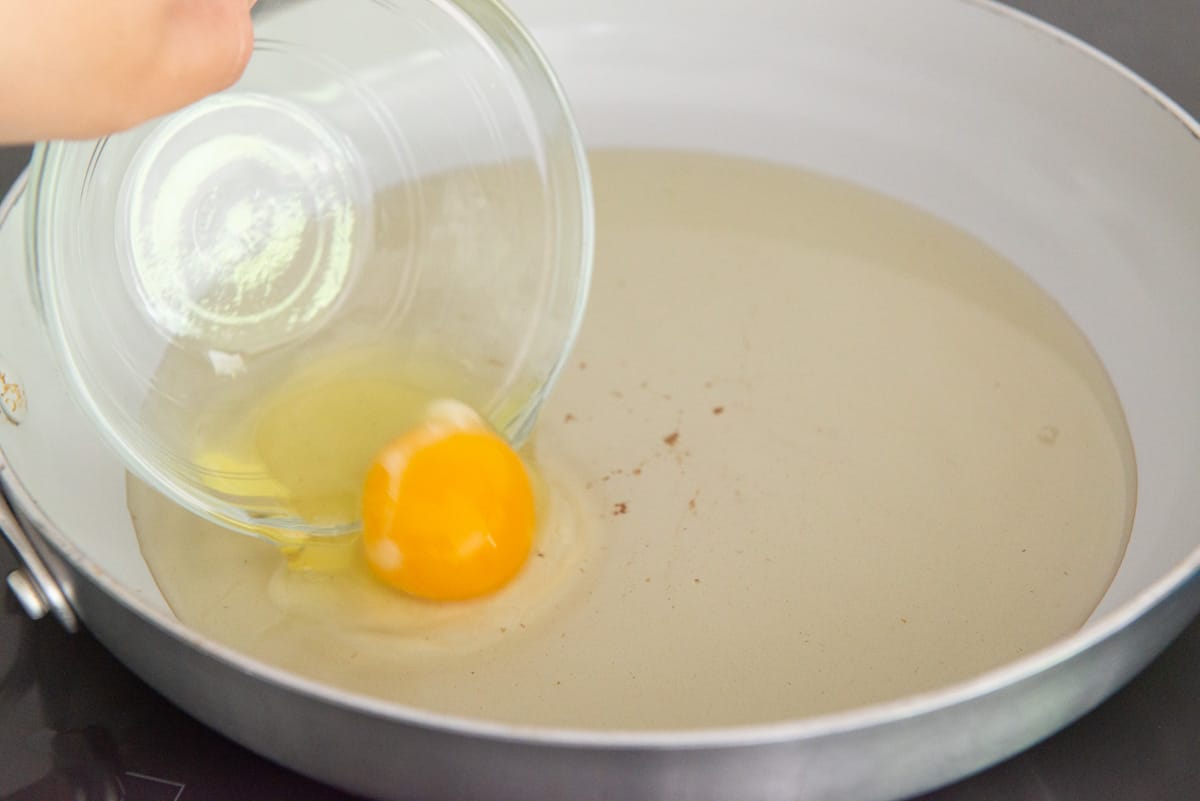
Doing so will give you a neater egg, like this:
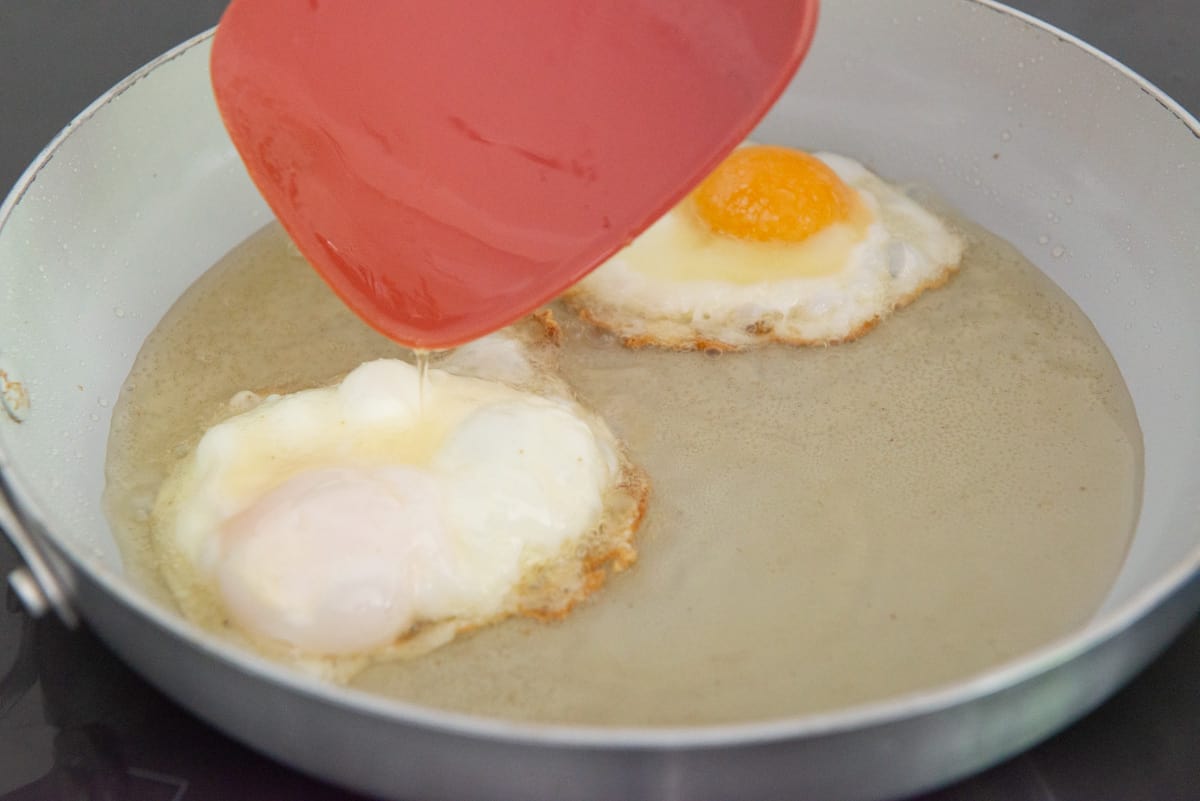
Whereas if you crack the egg directly from the shell into the hot fat, it will be more spread, like below, and tends to give a crispier edge due to the more uneven whites:
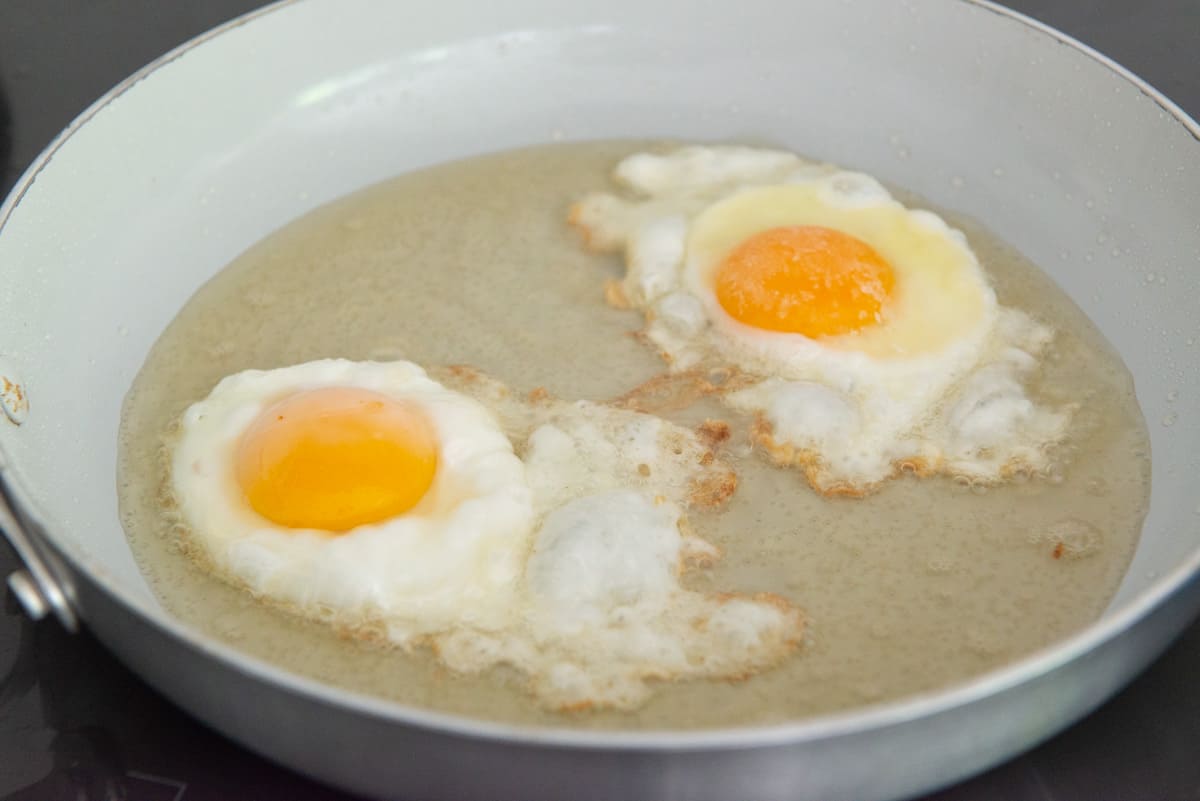
It’s all comes down to preference!
Now decide what kind of fat you want to cook with.
What Kind of Fat to Use
A basted egg can really be made with any type of cooking fat you enjoy, though I recommend more flavorful fats like bacon grease, melted butter, duck fat, and so on.
The hot fat not only cooks the eggs but adds flavor.
What I do is make bacon in the skillet first, then I use the leftover grease to cook the eggs.
Whatever fat you use, make sure it’s at least 1/4 cup, or coats the bottom of the pan. Otherwise you won’t have enough for basting.
Make sure the fat is hot, over a medium-high heat setting, before adding the eggs. Then, after adding the eggs to the pan, begin to baste the top to set the yolk.

You can either scoop up and drizzle the hot fat over the top, like above, or sort of splash the fat over like a big tsunami, like below:
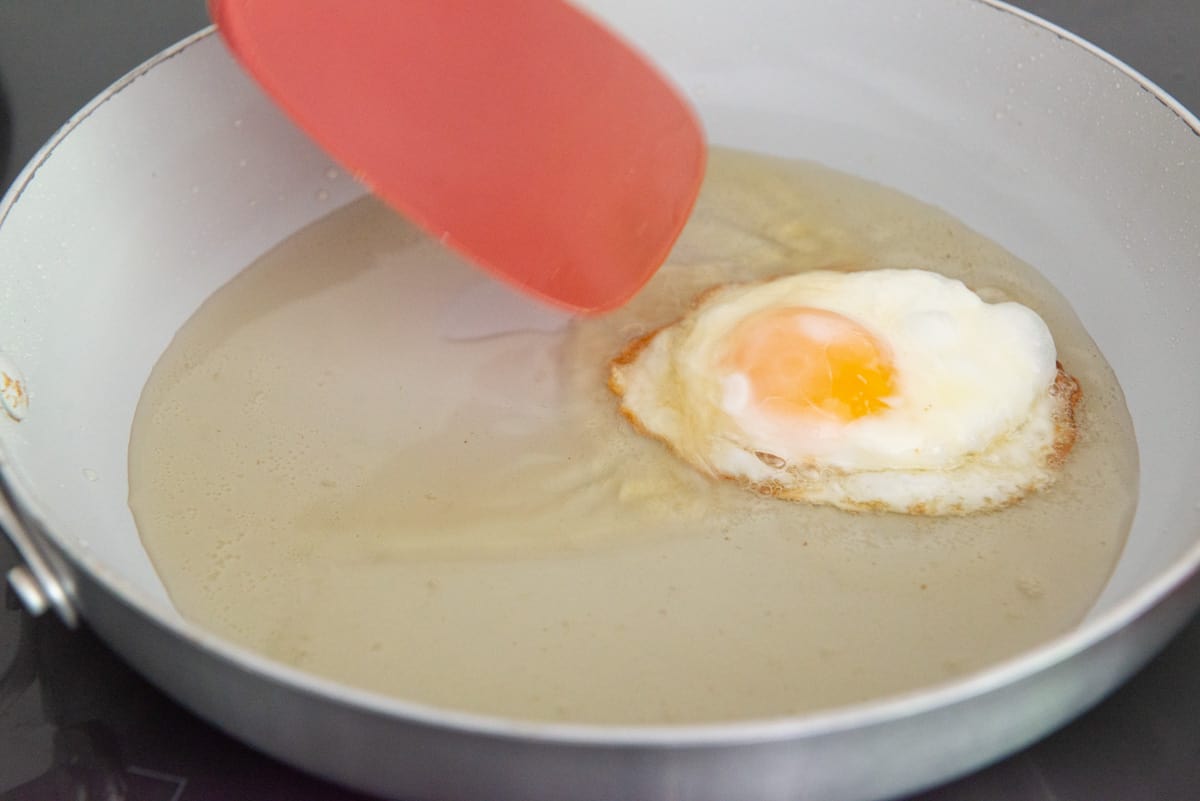
If desired, drain the basted eggs on paper towels to absorb any excess fat, then serve.
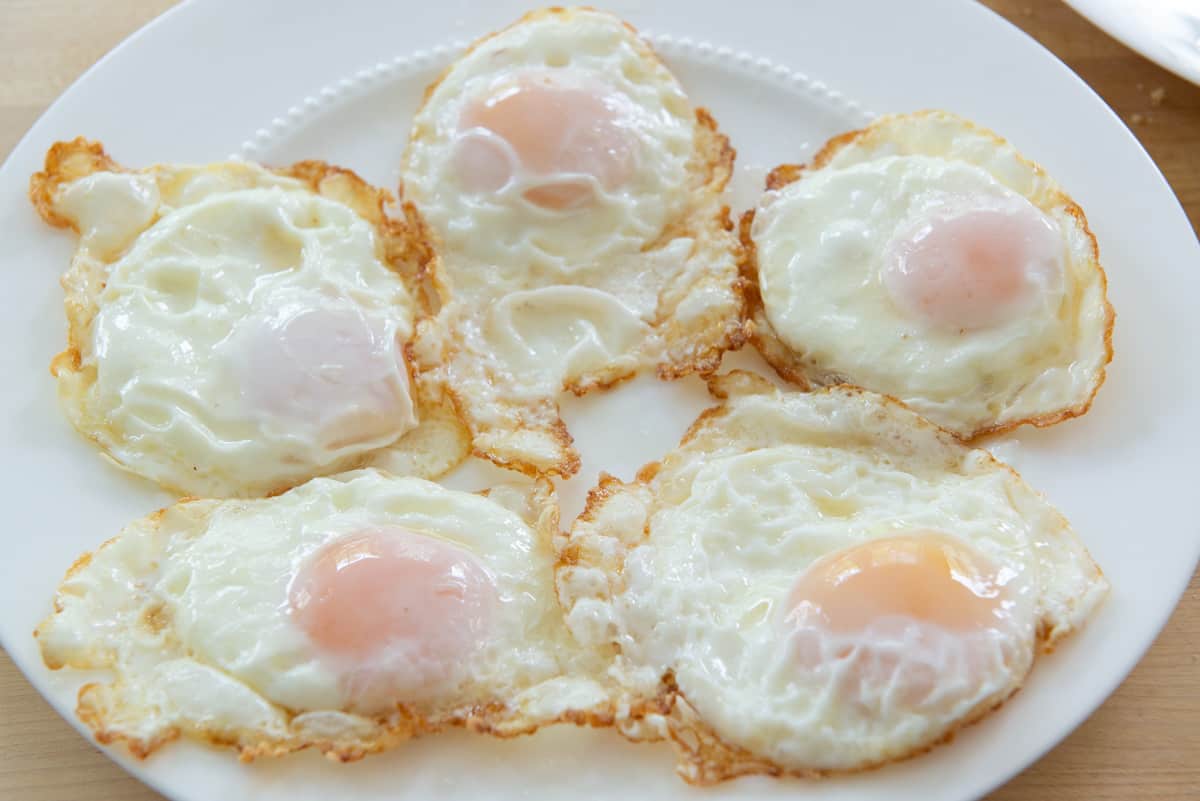
Once the basted eggs are cooked, enjoy them promptly while the egg whites are crispy.
My favorite way to serve them is with some sort of potato side like Hash Browns, Crispy Smashed Potatoes, or Sweet Potato Hash.
And of course, with the bacon that I cooked right before making the eggs!
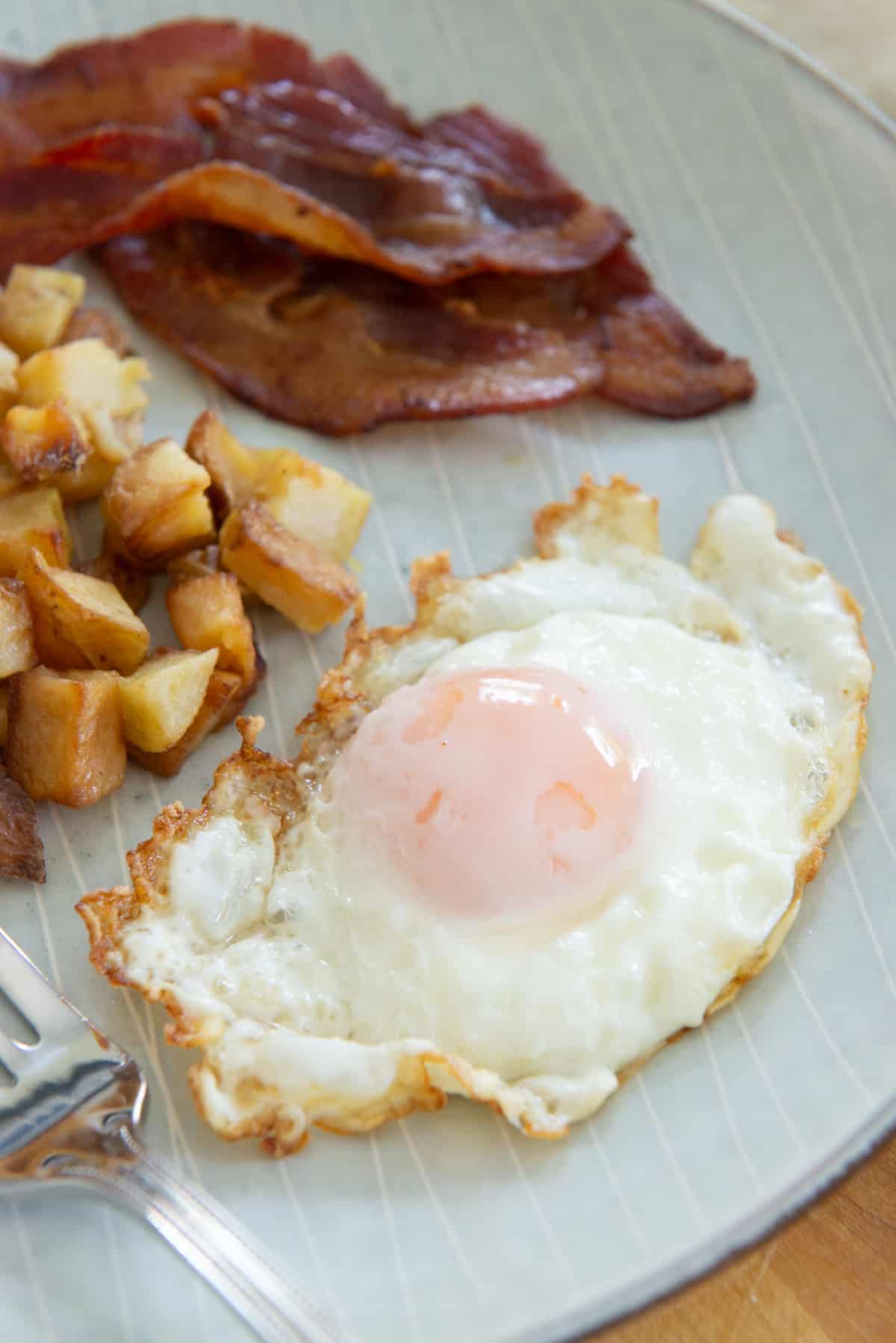
Enjoying the egg as is with a sprinkle of kosher salt and black pepper on top is classic, but you can also put this on a piece of avocado toast or a Burger. Enjoy!
Did you enjoy the recipe? Please leave a 5-star rating in the recipe card below and/or a review in the comments section further down the page. Or, follow me on Facebook, Instagram or Pinterest!
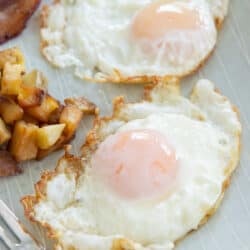
Basted Eggs
Ingredients
- 6 large eggs
- 1/4 cup cooking fat of your choice (bacon grease, butter, duck fat, etc)
Instructions
- Decide if you want more circular, neater eggs, or more frizzled crispy edges (see photo in blog post). If you want neater eggs, crack each egg into a bowl, then pour the egg from the bowl into the hot fat in the pan. For more crispy edge eggs, crack the eggs directly into the hot fat.
- Start with a nonstick skillet set over medium-high heat, and get the fat hot enough that it's shimmering. If you are cooking bacon first and using the leftover bacon grease for this recipe, the pan should be ready to go and hot as soon as you take the strips out. Otherwise, heat your cooking fat for a few minutes until shimmering and hot.
- Add eggs in a single layer to the hot fat, with enough space around each one that you can baste the eggs with your turner. In a 12" skillet, I can do 3 eggs at one time. In a 10" skillet, I only recommend two.
- Begin basting the eggs continuously with the hot fat. If the fat is sufficiently hot, you will see it start to set the top of the yolk. Total cooking time needed should be 1.5 to 2 minutes.
- Remove the eggs to a plate (drain first on paper towels if you wish), then repeat with the remaining eggs. Enjoy!
Notes
Nutrition
Nutrition is estimated using a food database and is only intended to be used as a guideline for informational purposes.

5 Comments on “Basted Eggs”
Good to know.
Totally delicious. Best eggs ever.
I’m like you I’ve always cooked eggs like this, just didn’t know it was called basting. I love the lacy edges!
I’ve also tried your way to poach an egg! My granddaughter and I enjoyed them, they came out perfect!
Thanks for all you cooking tips!
LOL, I’m 80 and didn’t realize cooking eggs this way was a “thing” either. I’ve cooked eggs this way all my life. It’s my favorite!! But thank you for putting it in a recipe for these young cooks so everyone can enjoy it.
Now how cool is that? I’ve been basting eggs for years now by cracking an egg into a hot, lightly oiled pan and then after a few minutes, pouring a bit of water in the pan and covering with a plate for a minute or two. But I don’t get crispy edges that way, so I’m going to start trying this technique. Thanks, Joanne.